The Bali You Dream About Exists — And It’s Called Viceroy
High above the Petanu River gorge, where the air carries the sweet trace of frangipani and the mineral scent of rain-soaked jungle, Viceroy Bali appears to float between sky and valley. This award-winning luxury resort in Ubud occupies a secluded ridge in the storied Valley of the Kings. It offers a panorama of emerald rice terraces and dense tropical forest, broken only by the silver curve of the river far below. From the marble terrace, the horizon unfolds toward Mount Agung, its volcanic peak draped in slow-moving clouds. This view feels entirely its own, part spectacle, part secret, and a reminder that places like this are never accidents.
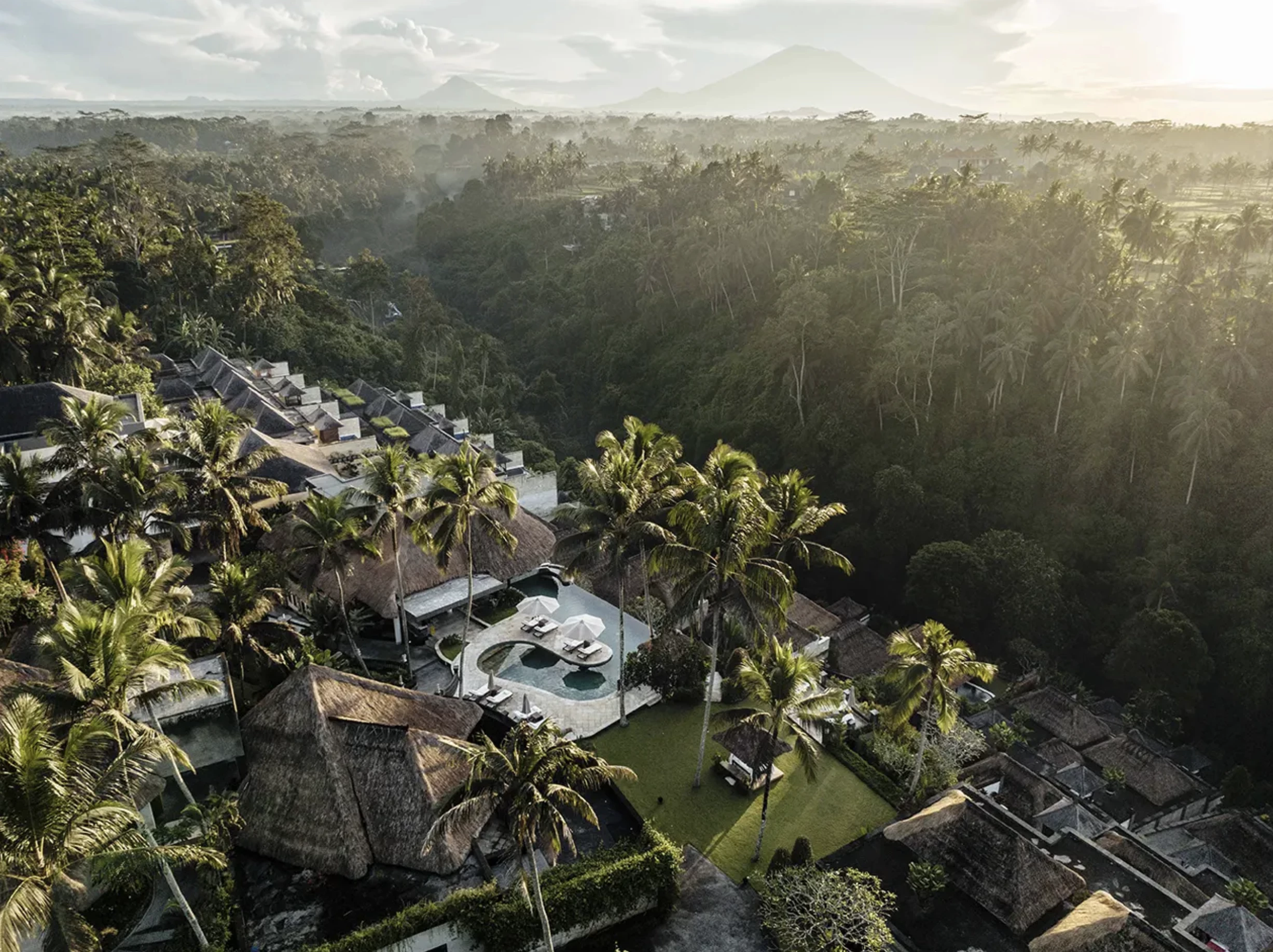
Реклама.
That sense of intention runs through everything at Viceroy Bali, beginning with its origins. The resort is, in the most essential ways, a family affair. Margaret Bainbridge founded it two decades ago with the idea that Balinese hospitality should be as soft and unhurried as the island’s light, yet grounded in the precision of international luxury standards. Today, her daughter Amanda continues that vision, directing a team of over two hundred who care for no more than forty villas. The ratio is as rare as the setting, and it translates into a level of service that feels less like hotel protocol and more like a form of mind reading. Guests speak of golf carts arriving unrequested, of staff remembering the smallest preferences, of a kind of attentiveness that feels personal but never intrusive.
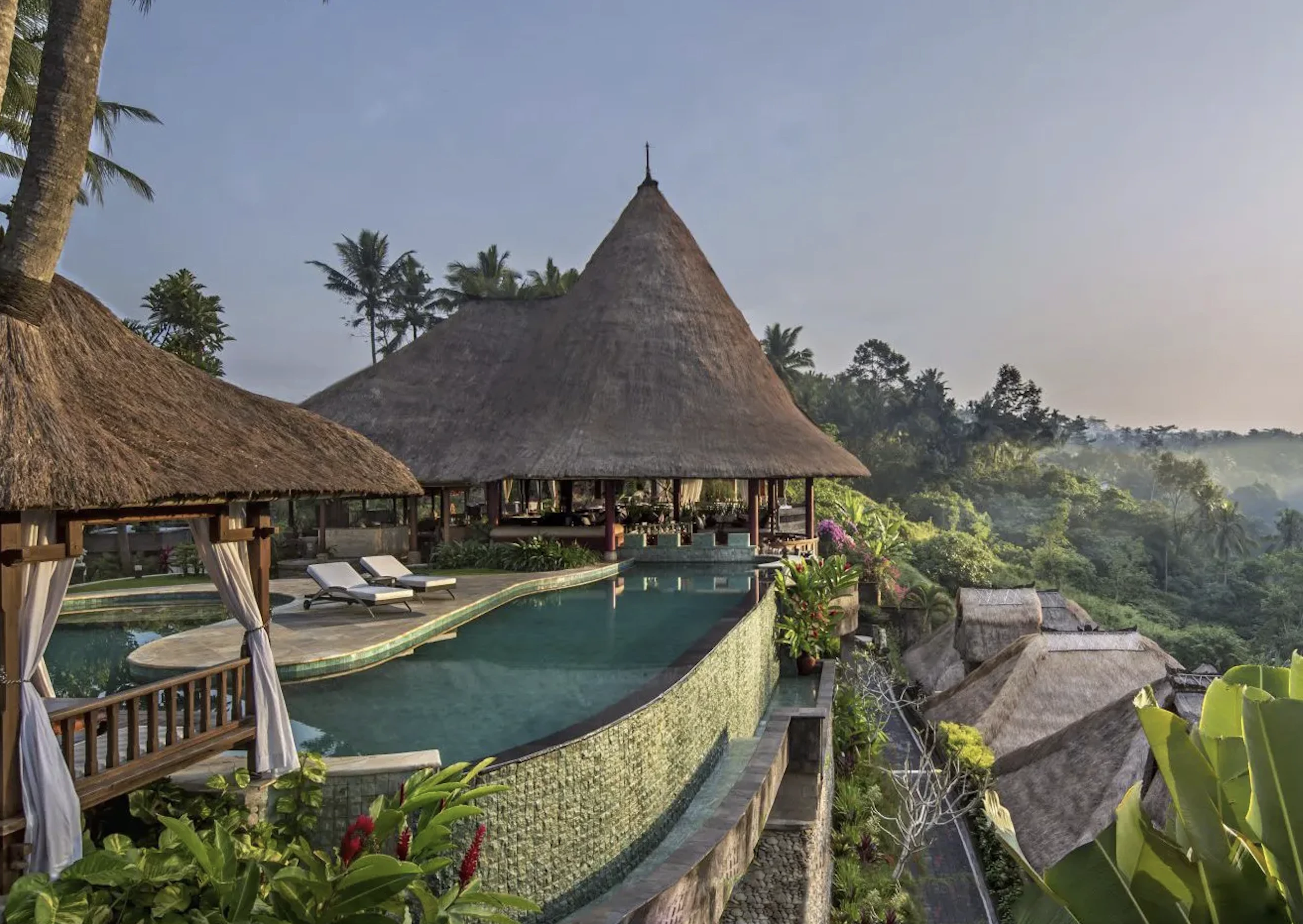
The experience begins inside the villas themselves, each designed to dissolve the boundary between indoors and out. Pool Suites offer intimacy and seclusion, while the vast Viceroy Villa, spanning over 4,300 square feet (ca. 399 m²), feels like a private estate hidden within the jungle. The most coveted, the Deluxe Terrace Villas, open onto marble terraces with heated pools, outdoor balés for shaded afternoons, and unbroken views over the river gorge. Inside, the sense of luxury builds with every detail: marble bathrooms with deep soaking tubs, Bower & Wilkins sound systems, espresso machines, and linens that hold the cool of the evening air.
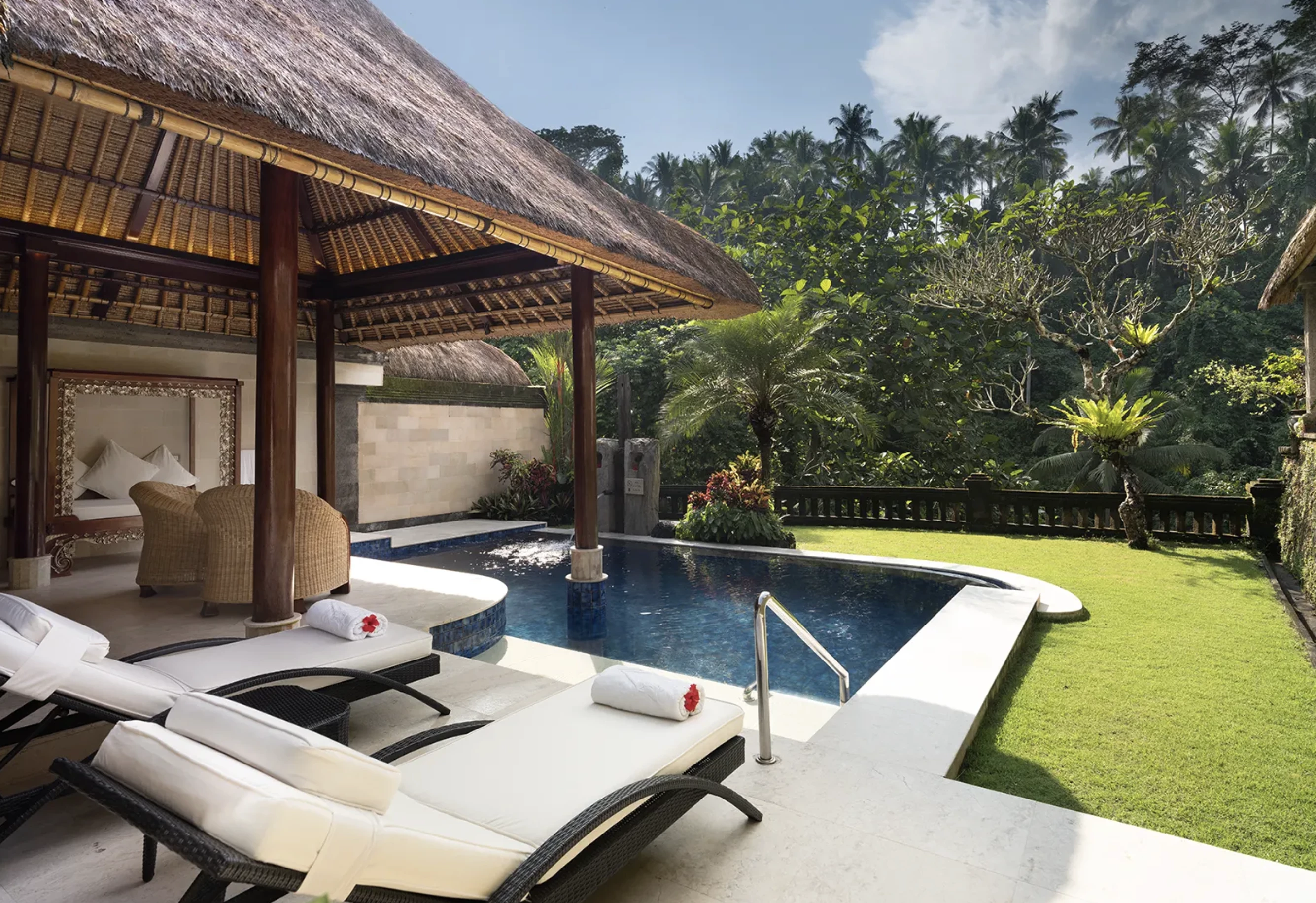
The location amplifies this sense of refuge. The Valley of the Kings is legally protected from future development, ensuring that the views guests wake up to — emerald rice terraces, dense tropical forest, and the silver arc of the river — will remain unchanged. In a Bali where new hotels seem to appear as quickly as the tides shift, this kind of permanence is rare. Here, the horizon belongs entirely to the jungle, the sky, and the volcanic silhouette of Mount Agung.
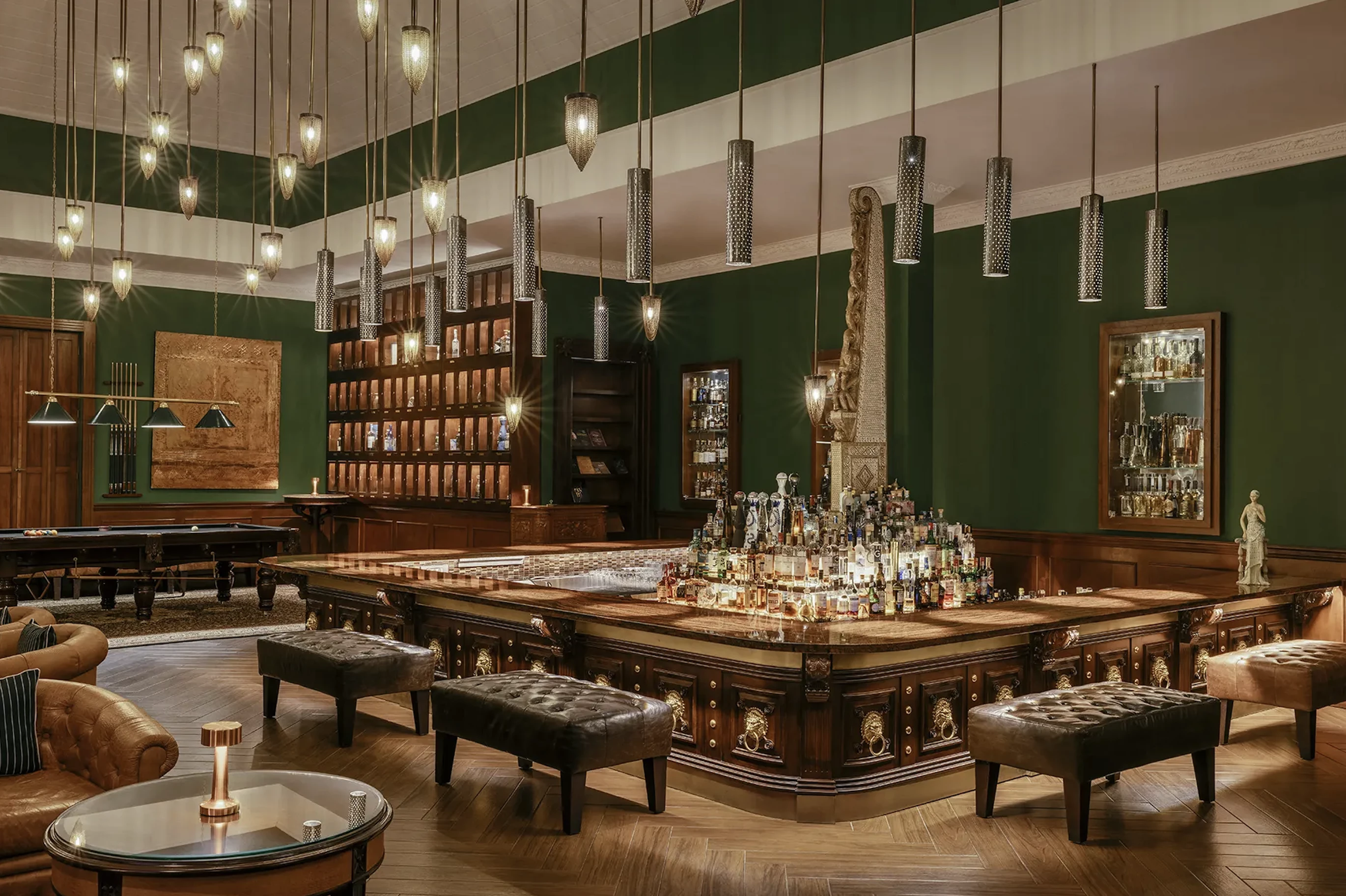
Dining at Viceroy Bali is a little like moving through chapters of a book you didn’t know you’d been waiting to read. You start at Apéritif, where Belgian chef Nic Vanderbeeken stages seven-course performances that pair Balinese vanilla with fermented cassava as if they’ve been lifelong friends. The room feels like the 1920s without the cigarette smoke, all low light and deliberate pacing. At the same time, sommelier Jean-Benoit Issele pours wines from a list so meticulously chosen it borders on obsessive. Wander downhill and the formality slips away. CasCades is all open air and has a jungle soundtrack, the kind of place where the Balinese Rijsttafel arrives in a parade of small dishes you didn’t realize would completely derail your afternoon plans. And then there’s the Pinstripe Bar — live jazz, shadows pooling in the corners, cocktails with enough personality to make you miss your dinner reservation and not care in the slightest.
Wellness here feels less like an add-on and more like part of why you came. The Akoya Spa sits right on the valley's edge, so your massage table faces the jungle instead of a blank wall. Treatments mix the best of both worlds — Balinese healing traditions and modern techniques — from warm coconut oil massages to herbal compresses that smell like the island itself. It's the kind of place where you leave feeling lighter, slower, and wondering why you don't make space for this in everyday life.

Viceroy Bali’s relationship with its surroundings is more than just aesthetics or service — it’s grounded in deep roots within the local community and landscape. Most of the staff come from nearby villages, and many have been with the resort since the day it opened, creating a sense of familiarity and continuity that guests notice immediately. Cultural experiences aren’t staged for effect but offered as part of daily life: weekly Balinese dance performances in the open air, craft workshops where guests sit alongside local artisans, cooking classes using ingredients from the resort’s own greenhouse, and guided temple visits that open a window into Bali’s spiritual traditions. The greenhouse itself tells a bigger story — supplying fresh produce to the kitchen while inviting guests to taste what’s growing and see sustainable farming in action.
That focus on sustainability runs throughout the resort. For such a secluded place, some amenities feel almost improbable: a private helipad for quick transfers from Denpasar, a discreet squash court, and a water treatment system that makes the tap water safe to drink — eliminating the need for endless plastic bottles. Solar panels make use of the island’s abundant sunlight, while partnerships with initiatives like the Plastic Exchange program show that environmental responsibility here isn’t an afterthought but part of the design. The goal is clear and ambitious: to reduce resource use by 20% by 2026 without compromising the comfort and privacy that define the Viceroy experience.
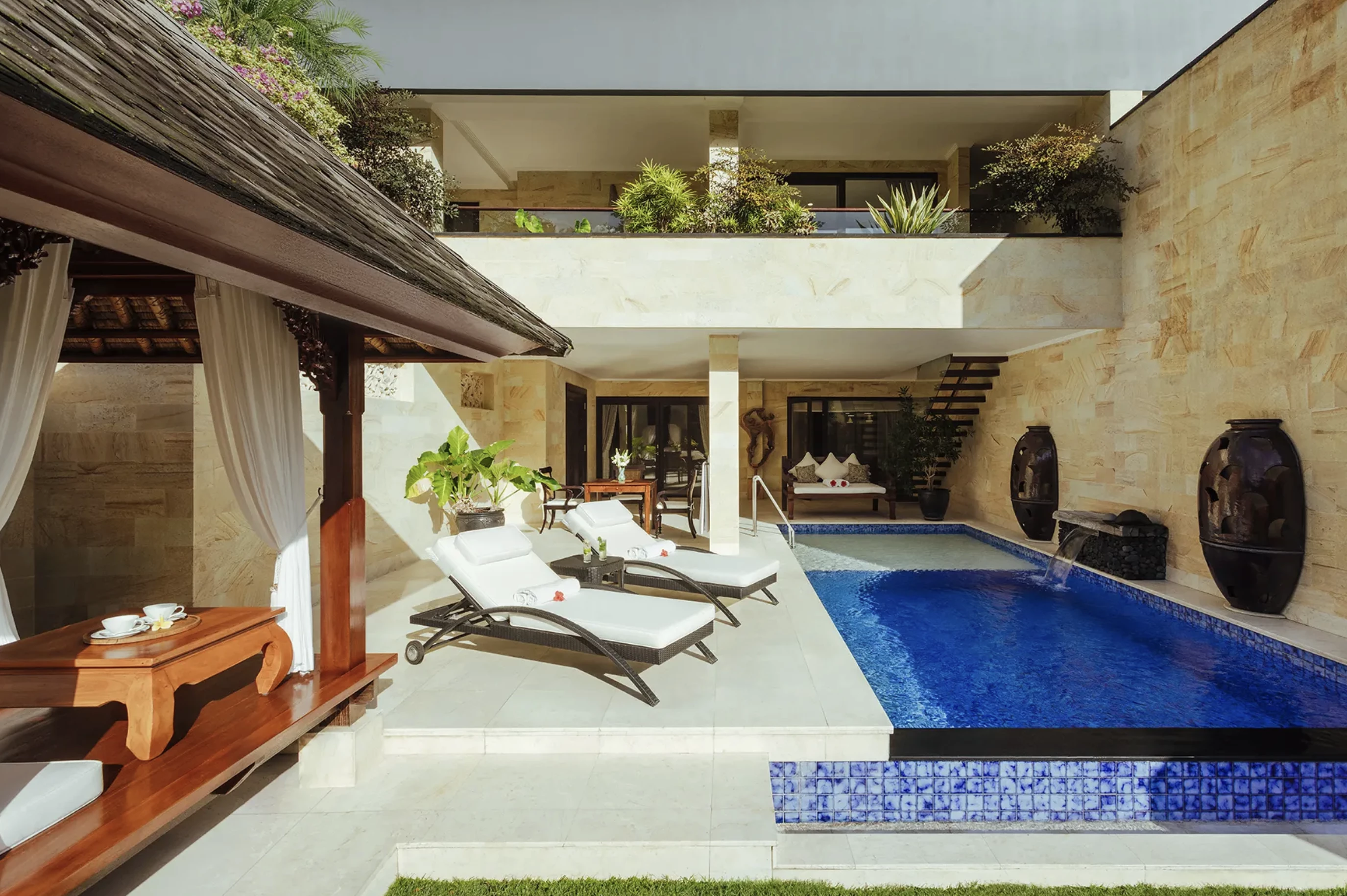
Viceroy Bali’s standing wasn’t built overnight. Its family ownership, protected setting in the Valley of the Kings, and attention to detail have drawn travelers who keep mental lists of the places worth returning to. That loyalty has brought a steady stream of recognition — from TripAdvisor Travellers’ Choice and World Travel Awards to multiple World Luxury Hotel Awards. The most striking came when more than 400,000 Condé Nast Traveler readers named it the best resort in the world, a headline that felt less like news and more like confirmation of what many guests had known for years.
In 2025, it adds another: the Global Recognition Award for Bali’s Best Luxury Resort. In a market crowded with high-end names, the award reflects more than the quality of the villas or the views — it recognizes the way the resort protects its landscape, invests in its community, and creates an experience that feels genuinely connected to place.

As the sun drops behind the ridge and the valley fades into shadow, the sounds of the jungle grow sharper and the air turns cool. From the terrace, the river is just a faint glint between the trees. It’s the kind of moment where it’s easy to forget flights, schedules, and the rest of the world entirely — and for once, not miss them at all.
Promotion
